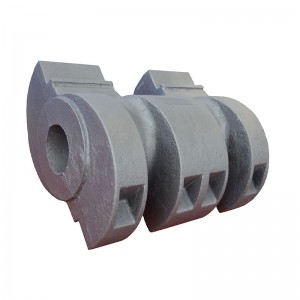Nov . 11, 2024 03:26 Back to list
Advantages of Aluminum Mold Casting in Modern Manufacturing Processes
Aluminum Mold Casting An Overview of Techniques and Applications
Aluminum mold casting is a highly versatile and widely used manufacturing process in various industries. This method involves pouring molten aluminum into a mold to create complex shapes and components. Its popularity stems from the inherent properties of aluminum, including its lightweight nature, excellent corrosion resistance, and ease of machining. In this article, we will explore the different techniques associated with aluminum mold casting, its advantages, applications, and considerations for successful implementation.
Techniques of Aluminum Mold Casting
1. Sand Casting Sand casting is one of the oldest and most common methods of aluminum mold casting. In this technique, a mold is created from a mixture of sand, clay, and water. The mold halves are packed around a pattern, typically made of metal or plastic, which is then removed, leaving a cavity in its shape. Molten aluminum is poured into the cavity, and once it cools, the mold is broken away to reveal the cast part. Sand casting is favored for its ability to produce large parts and its cost-effectiveness for low to medium production runs.
2. Die Casting Die casting is another popular technique, particularly for high-volume production. In this process, molten aluminum is injected into a steel mold under high pressure. This method allows for intricate designs and finer details, resulting in a higher-quality finish compared to sand casting. Die casting is highly suitable for mass production due to its speed and efficiency, making it an ideal choice for components like automotive parts, consumer electronics housings, and various industrial applications.
3. Permanent Mold Casting Permanent mold casting employs reusable metal molds, typically made of iron or steel. This method allows for better dimensional accuracy and surface finish than sand casting. The process involves pre-heating the mold and then pouring molten aluminum into it. While it is costlier than sand casting, the benefits of higher production rates and improved part quality make it a viable option for certain applications, particularly when consistent quality is necessary.
4. Investment Casting Also known as lost-wax casting, this method involves creating a wax model of the desired part, which is then coated with a ceramic shell. Once the shell hardens, the wax is melted away, leaving a cavity for the molten aluminum. Investment casting is ideal for producing complex geometries and parts with tight tolerances. It is commonly used in aerospace and medical industries where precision is critical.
Advantages of Aluminum Mold Casting
aluminum mold casting

Aluminum mold casting offers several advantages over other manufacturing methods. Firstly, aluminum itself is lightweight, which is crucial for industries like automotive and aerospace where weight reduction is a priority. Additionally, aluminum exhibits excellent thermal and electrical conductivity, making it suitable for a vast range of applications.
Moreover, the casting process allows for the production of complex shapes that might be difficult or impossible to achieve with machining alone. The ability to create intricate designs efficiently reduces waste and saves time during production.
Another significant benefit is the excellent corrosion resistance of aluminum, which prolongs the lifespan of components and reduces the need for frequent replacements.
Applications of Aluminum Mold Casting
Aluminum mold casting is utilized in various industries, including automotive (for engine blocks and transmission cases), aerospace (for structural components and framework), electronics (for housings and heat sinks), and consumer goods (like kitchenware and decorative fixtures). The versatility of aluminum and the adaptability of mold casting techniques enable engineers and manufacturers to produce high-quality, reliable components for both functional and aesthetic purposes.
Conclusion
Aluminum mold casting is a vital manufacturing process that continues to evolve with advancements in technology and materials. Its variety of techniques caters to the diverse needs of various industries, offering unmatched benefits in terms of efficiency, design flexibility, and material properties. Understanding the nuances of casting methods allows manufacturers to select the most suitable approach for their specific applications, ultimately driving innovation and efficiency in modern manufacturing practices.
-
Durable Centrifugally Cast Iron Water Main Pipe
NewsAug.11,2025
-
Centrifugally Cast Iron Water Main Pipes for Reliability
NewsAug.10,2025
-
High-Quality Centrifugally Cast Iron Water Main Pipes
NewsAug.09,2025
-
Durable Cast Iron Water Main Pipe & Drainage Solutions
NewsAug.08,2025
-
Buy Cast Iron Pipe: Premium Ductile Iron & Drain Solutions
NewsAug.07,2025
-
Durable Cast Iron Water Main Pipe | Buy Ductile Pipe
NewsAug.06,2025


